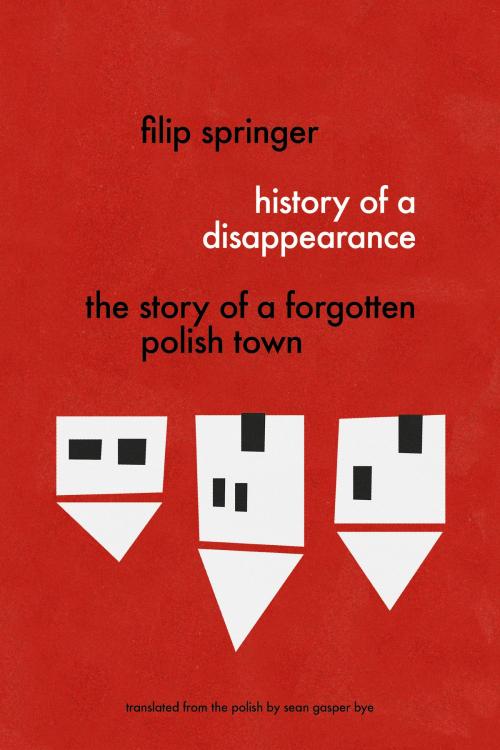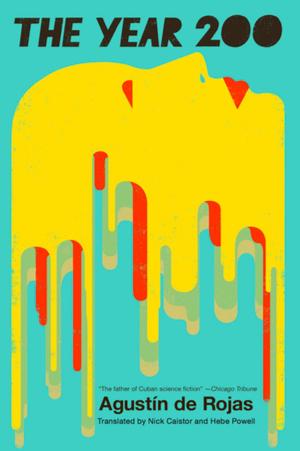History of a Disappearance: The Story of a Forgotten Polish Town
Nonfiction, History, Eastern Europe, Modern, 20th Century, Social & Cultural Studies, Social Science, Anthropology| Author: | Filip Springer, Sean Gasper Bye | ISBN: | 9781632061164 |
| Publisher: | Restless Books | Publication: | April 4, 2017 |
| Imprint: | Language: | English |
| Author: | Filip Springer, Sean Gasper Bye |
| ISBN: | 9781632061164 |
| Publisher: | Restless Books |
| Publication: | April 4, 2017 |
| Imprint: | |
| Language: | English |
Winner of Asymptote Journal’s 2016 Close Approximations Translation Contest and Shortlisted for the Nike Literary Prize, the Gdynia Literary Prize, and the Ryszard Kapuściński Prize, History of a Disappearance is the fascinating true story of a small mining town in the southwest of Poland that, after seven centuries of history, disappeared.
Lying at the crucible of Central Europe, the Silesian village of Kupferberg suffered the violence of the Thirty Years War, the Napoleonic Wars, and World War I. After Stalin’s post-World War II redrawing of Poland’s borders, Kupferberg became Miedzianka, a town settled by displaced people from all over Poland and a new center of the Eastern Bloc’s uranium-mining industry. Decades of neglect and environmental degradation led to the town being declared uninhabitable, and the population was evacuated. Today, it exists only in ruins, with barely a hundred people living on the unstable ground above its collapsing mines.
In this work of unsparing and insightful reportage, renowned journalist, photographer, and architecture critic Filip Springer rediscovers this small town’s fascinating history. Digging beyond the village’s mythic foundations and the great wars and world leaders that shaped it, Springer catalogs the lost human elements: the long-departed tailor and deceased shopkeeper; the parties, now silenced, that used to fill the streets with shouts and laughter; and the once-beautiful cemetery, with gravestones upended by tractors and human bones scattered by dogs. In Miedzianka, Springer sees a microcosm of European history, and a powerful narrative of how the ghosts of the past continue to haunt us in the present.
“I chose the winning translation of Filip Springer by Sean Gasper Bye because I found the subject matter totally gripping—it’s set in 1944, when the Soviet counteroffensive has reached the Vistula River—and the prose itself is satisfyingly dense, and it has what I look for in any good translation, a very convincing voice.”
—Margaret Jull Costa, Judge’s Citation for Asymptote Journal’s 2016 Close Approximations Translation Contest
“Although he is trained as a journalist and photographer, Filip Springer’s work offers an example of how truth can be even more enthralling than fiction. In his most celebrated piece so far, History of a Disappearance (Polish: Miedzianka. Historia znikania), he delved into the stories of a small town that has been completely wiped off the face of the earth, as though it had never existed. By exploring the deeply personal and moving stories of this town and its former inhabitants, Springer gives readers an illuminating journey through the challenges that Poland has faced as a country as well.”
—Lani Seelinger, Culture Trip
“Filip Springer dubs himself a home-grown archeologist and sets off for Lower Silesia. Using delicate brush strokes, detail by detail, he uncovers and reconstructs the fascinating history of Kupferberg–Miedzianka, a small town between Jelenia Góra and Kamienna Góra, along with its inhabitants. Kupferberg was once a mining town, as well as briefly a tourist gem and a rest-cure destination. Situated on a mountaintop, for six hundred years it withstood the turmoil of war—until the Red Army arrived, and uranium ore was discovered nearby. This is journalism you read holding your breath, like with a thriller, though you know it doesn’t have a Hollywood ending at all.”
—Ewa Winnicka, Polityka
“Springer marvelously describes the atmosphere of terror, silence, and hidden suffering that people experienced firsthand as a result of the arms race and the drive for nuclear weapons. The search for uranium ends in 1952, the town quickly empties out, and only ghosts and murky stories remain.”
—Paulina Wilk, Rzeczpospolita
“An archeologist, ethnographer, reporter, and photojournalist, Springer reveals an extraordinary talent for storytelling in History of a Disappearance. Everything here is masterfully balanced, including the changing rhythms of the story—we are fascinated to read of the past glories of Kupferberg and no sooner do we think this book will be a nostalgic journey down memory lane than, as the Polish settlers arrive, dramatic tension sneaks its way in, building to a climax in the chapters on the uranium mine.”
—Magdalena Piekarska, Gazeta Wyborcza Wrocław
“History of a Disappearance is marked by a photographer’s skill for proper framing, at one point holding the viewer’s gaze on the horizon and at another point on the details, then finally uncovering subsequent layers of history, as though from a palimpsest. I read about the pharmacy in Miedzianka that closed in the late fifties and I can see—distinctly—the colorful boxes and bottles rolling toward the forest and blown by the wind.”
—Joanna Roszak, Dwutygodnik.com
About the Author:
Filip Springer (born 1982) is a self-taught journalist who has been working as a reporter and photographer since 2006. His journalistic debut—History of a Disappearance—was shortlisted for the Ryszard Kapuściński Literary Reportage Prize in 2011 and was nominated for the Gdynia Literary Prize in 2012. He was also shortlisted for the Nike Literary Prize in 2012 and winner of the third annual Ryszard Kapuściński fellows contest for young journalists.
About the Translator:
Sean Gasper Bye is a translator of Polish, French, and Russian literature. He has translated work by some of Poland’s leading nonfiction writers, including Małgorzata Szejnert, Paweł Smoleński, and Lidia Ostałowska. An excerpt from his translation of History of a Disappearance won the Asymptote Close Approximations Prize in 2016. He lives in New York.
Winner of Asymptote Journal’s 2016 Close Approximations Translation Contest and Shortlisted for the Nike Literary Prize, the Gdynia Literary Prize, and the Ryszard Kapuściński Prize, History of a Disappearance is the fascinating true story of a small mining town in the southwest of Poland that, after seven centuries of history, disappeared.
Lying at the crucible of Central Europe, the Silesian village of Kupferberg suffered the violence of the Thirty Years War, the Napoleonic Wars, and World War I. After Stalin’s post-World War II redrawing of Poland’s borders, Kupferberg became Miedzianka, a town settled by displaced people from all over Poland and a new center of the Eastern Bloc’s uranium-mining industry. Decades of neglect and environmental degradation led to the town being declared uninhabitable, and the population was evacuated. Today, it exists only in ruins, with barely a hundred people living on the unstable ground above its collapsing mines.
In this work of unsparing and insightful reportage, renowned journalist, photographer, and architecture critic Filip Springer rediscovers this small town’s fascinating history. Digging beyond the village’s mythic foundations and the great wars and world leaders that shaped it, Springer catalogs the lost human elements: the long-departed tailor and deceased shopkeeper; the parties, now silenced, that used to fill the streets with shouts and laughter; and the once-beautiful cemetery, with gravestones upended by tractors and human bones scattered by dogs. In Miedzianka, Springer sees a microcosm of European history, and a powerful narrative of how the ghosts of the past continue to haunt us in the present.
“I chose the winning translation of Filip Springer by Sean Gasper Bye because I found the subject matter totally gripping—it’s set in 1944, when the Soviet counteroffensive has reached the Vistula River—and the prose itself is satisfyingly dense, and it has what I look for in any good translation, a very convincing voice.”
—Margaret Jull Costa, Judge’s Citation for Asymptote Journal’s 2016 Close Approximations Translation Contest
“Although he is trained as a journalist and photographer, Filip Springer’s work offers an example of how truth can be even more enthralling than fiction. In his most celebrated piece so far, History of a Disappearance (Polish: Miedzianka. Historia znikania), he delved into the stories of a small town that has been completely wiped off the face of the earth, as though it had never existed. By exploring the deeply personal and moving stories of this town and its former inhabitants, Springer gives readers an illuminating journey through the challenges that Poland has faced as a country as well.”
—Lani Seelinger, Culture Trip
“Filip Springer dubs himself a home-grown archeologist and sets off for Lower Silesia. Using delicate brush strokes, detail by detail, he uncovers and reconstructs the fascinating history of Kupferberg–Miedzianka, a small town between Jelenia Góra and Kamienna Góra, along with its inhabitants. Kupferberg was once a mining town, as well as briefly a tourist gem and a rest-cure destination. Situated on a mountaintop, for six hundred years it withstood the turmoil of war—until the Red Army arrived, and uranium ore was discovered nearby. This is journalism you read holding your breath, like with a thriller, though you know it doesn’t have a Hollywood ending at all.”
—Ewa Winnicka, Polityka
“Springer marvelously describes the atmosphere of terror, silence, and hidden suffering that people experienced firsthand as a result of the arms race and the drive for nuclear weapons. The search for uranium ends in 1952, the town quickly empties out, and only ghosts and murky stories remain.”
—Paulina Wilk, Rzeczpospolita
“An archeologist, ethnographer, reporter, and photojournalist, Springer reveals an extraordinary talent for storytelling in History of a Disappearance. Everything here is masterfully balanced, including the changing rhythms of the story—we are fascinated to read of the past glories of Kupferberg and no sooner do we think this book will be a nostalgic journey down memory lane than, as the Polish settlers arrive, dramatic tension sneaks its way in, building to a climax in the chapters on the uranium mine.”
—Magdalena Piekarska, Gazeta Wyborcza Wrocław
“History of a Disappearance is marked by a photographer’s skill for proper framing, at one point holding the viewer’s gaze on the horizon and at another point on the details, then finally uncovering subsequent layers of history, as though from a palimpsest. I read about the pharmacy in Miedzianka that closed in the late fifties and I can see—distinctly—the colorful boxes and bottles rolling toward the forest and blown by the wind.”
—Joanna Roszak, Dwutygodnik.com
About the Author:
Filip Springer (born 1982) is a self-taught journalist who has been working as a reporter and photographer since 2006. His journalistic debut—History of a Disappearance—was shortlisted for the Ryszard Kapuściński Literary Reportage Prize in 2011 and was nominated for the Gdynia Literary Prize in 2012. He was also shortlisted for the Nike Literary Prize in 2012 and winner of the third annual Ryszard Kapuściński fellows contest for young journalists.
About the Translator:
Sean Gasper Bye is a translator of Polish, French, and Russian literature. He has translated work by some of Poland’s leading nonfiction writers, including Małgorzata Szejnert, Paweł Smoleński, and Lidia Ostałowska. An excerpt from his translation of History of a Disappearance won the Asymptote Close Approximations Prize in 2016. He lives in New York.















